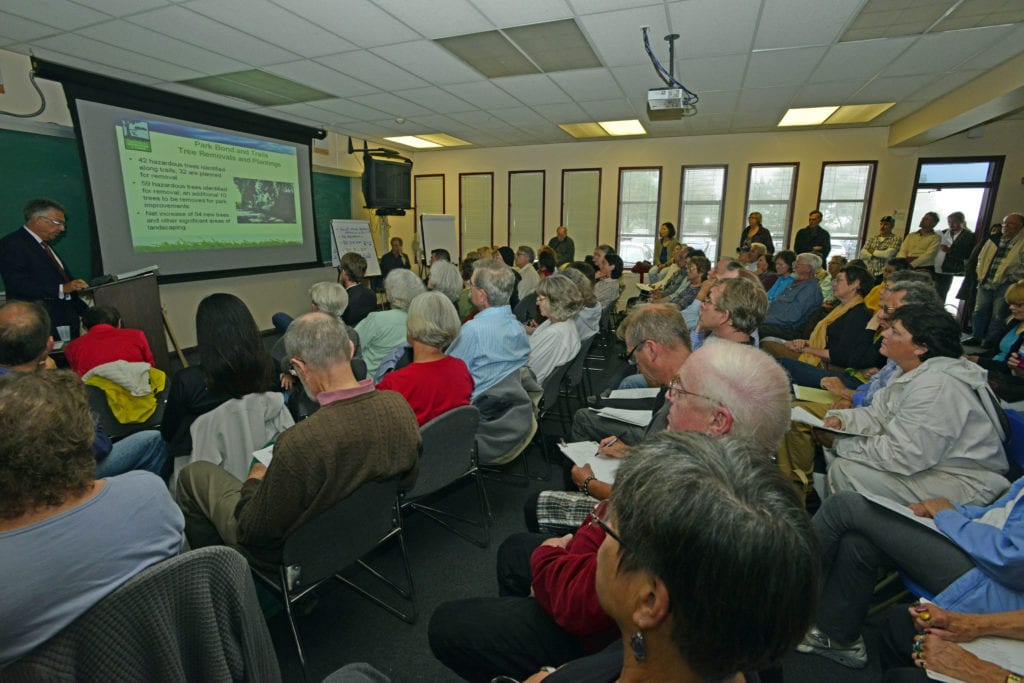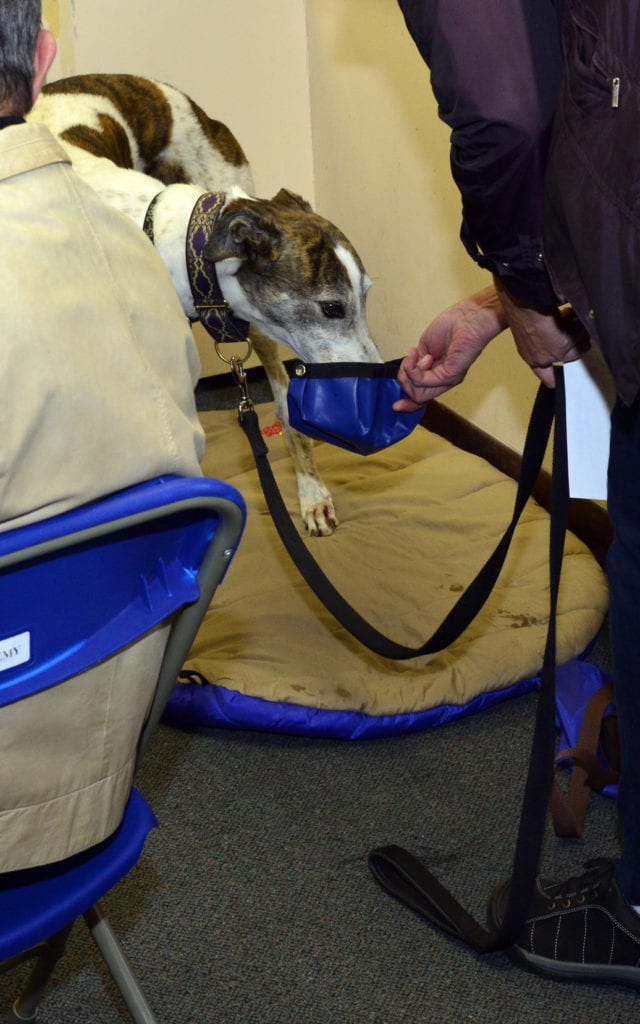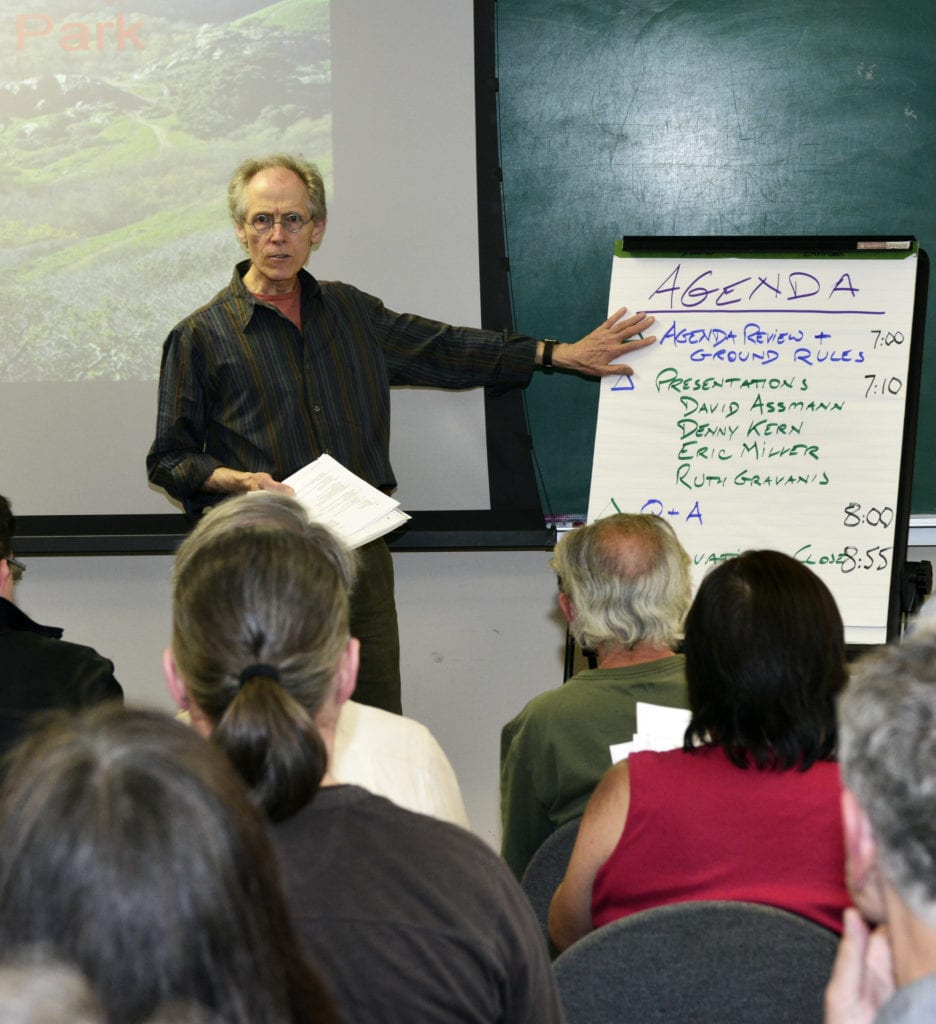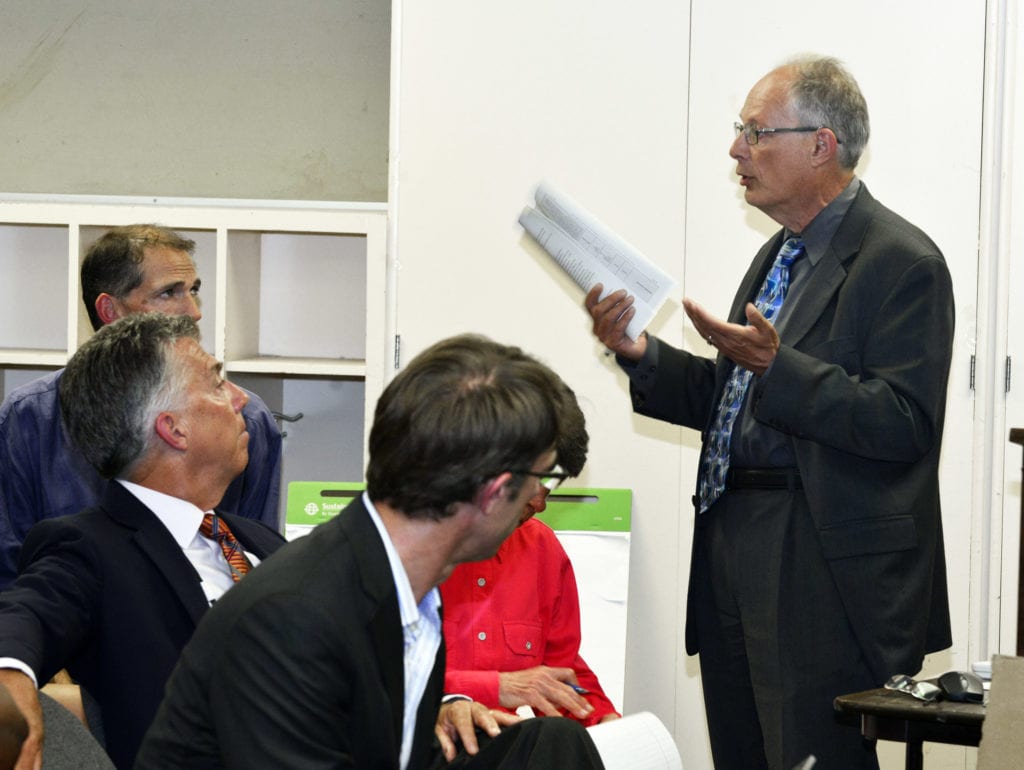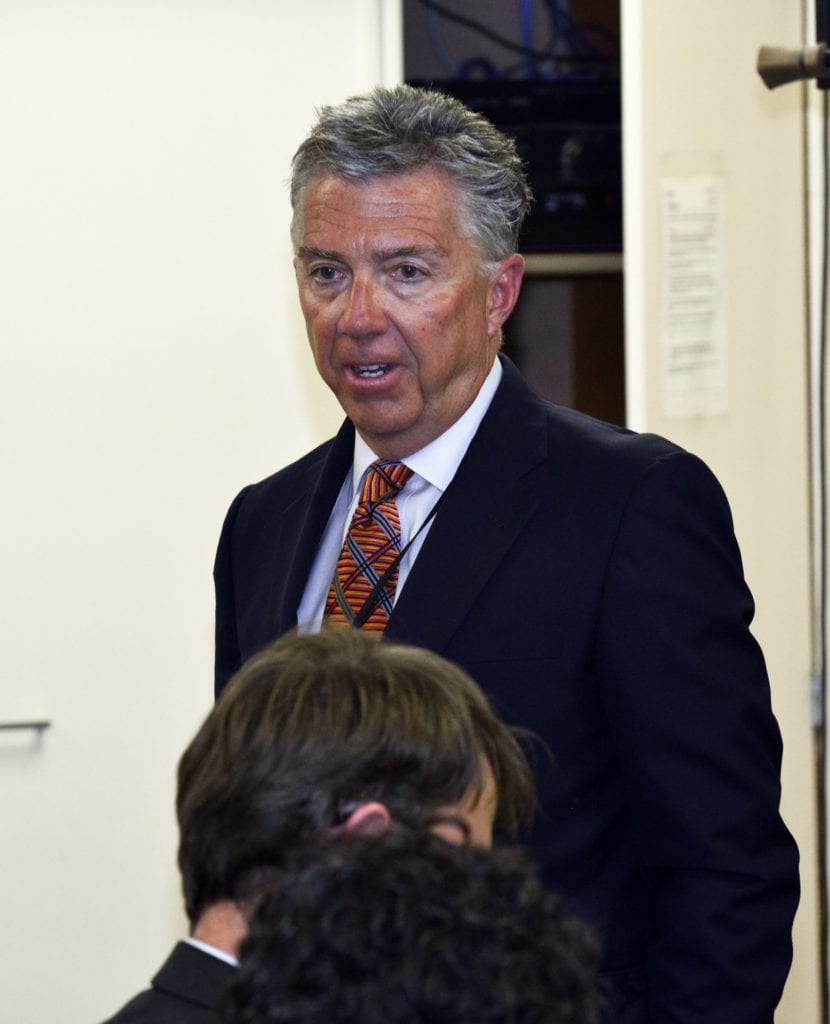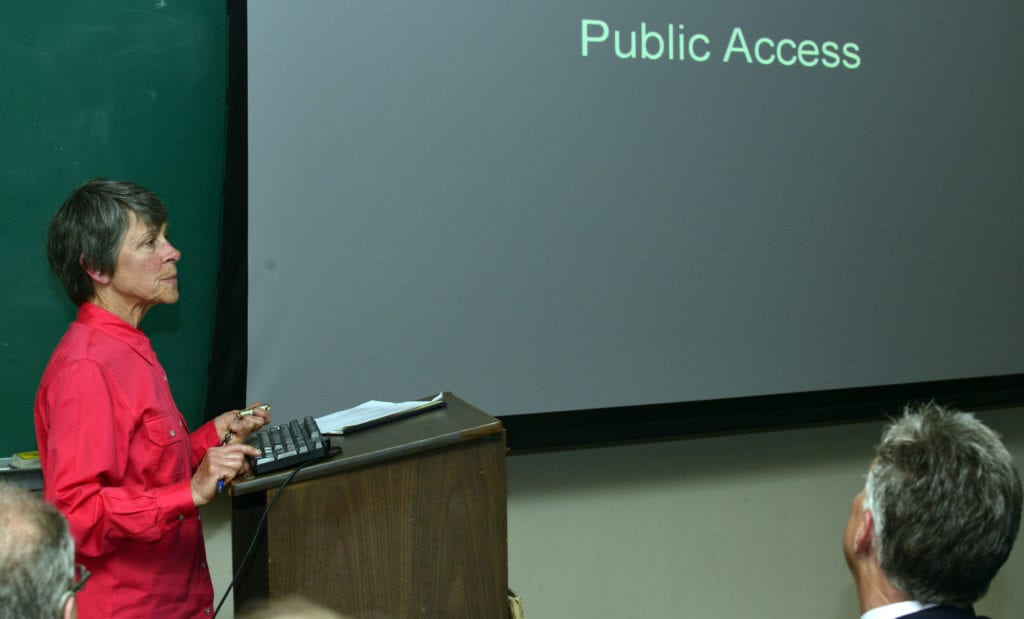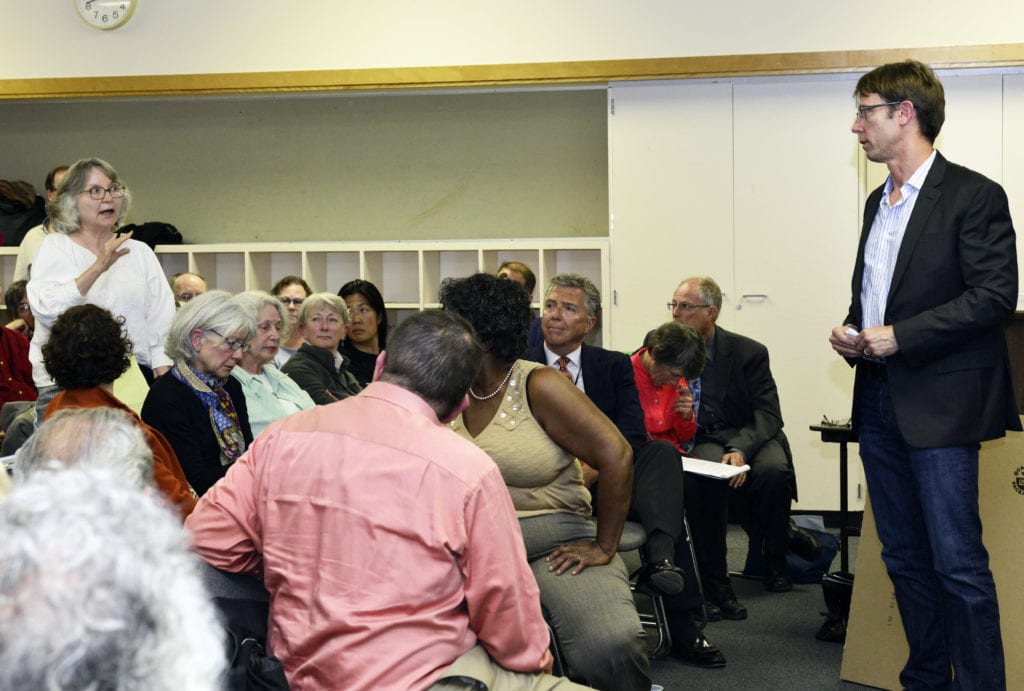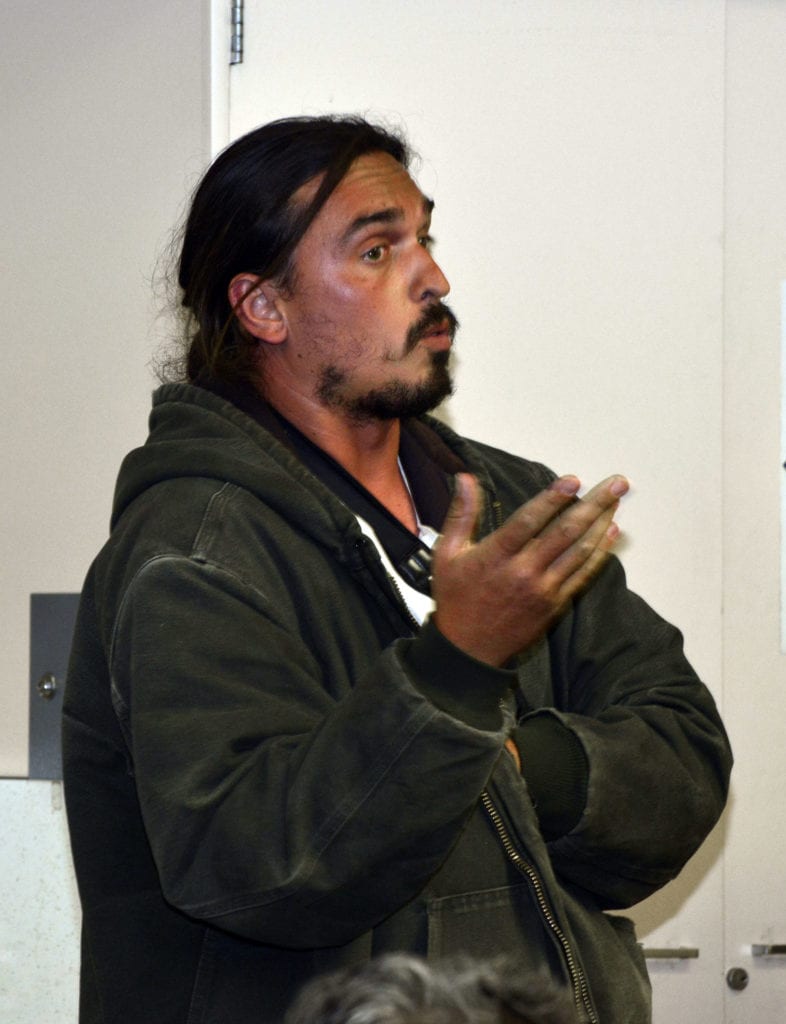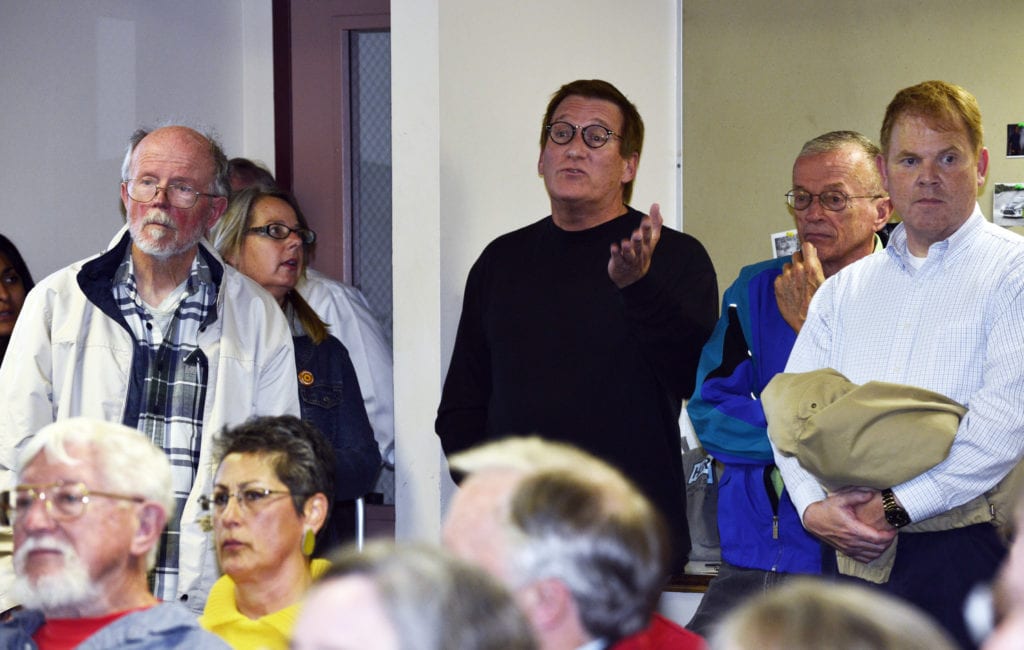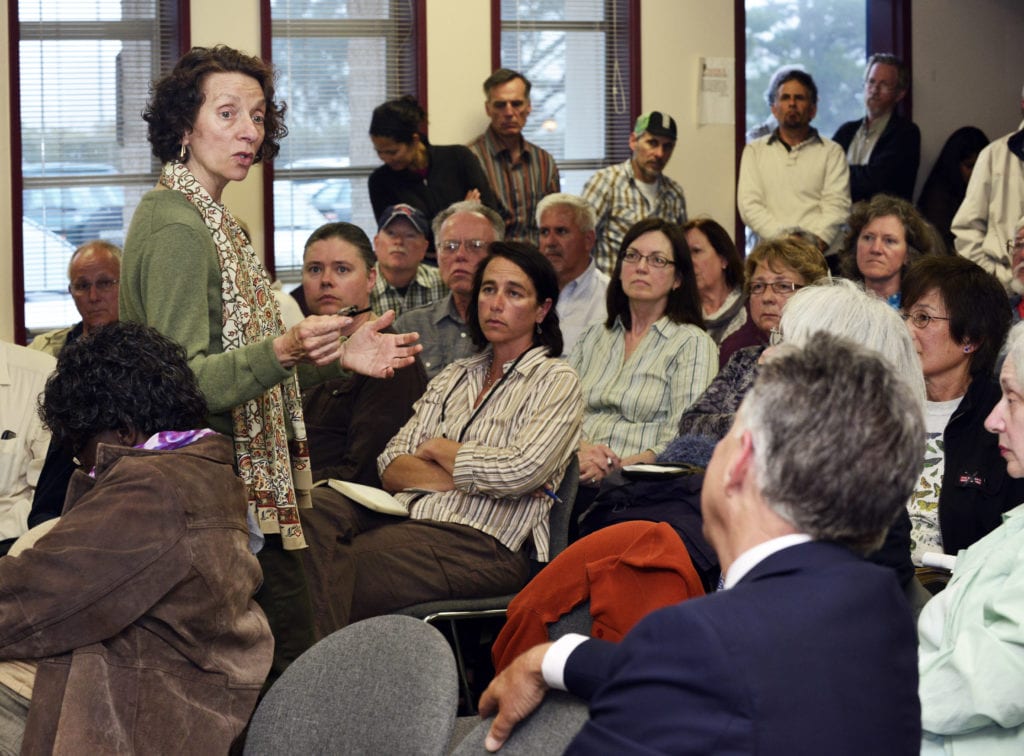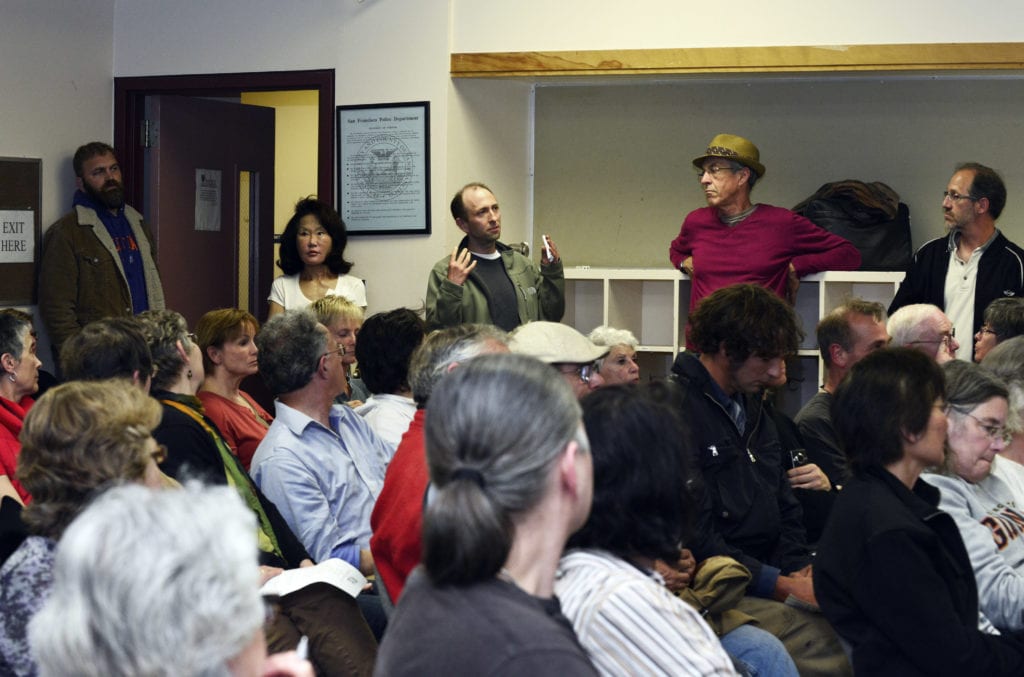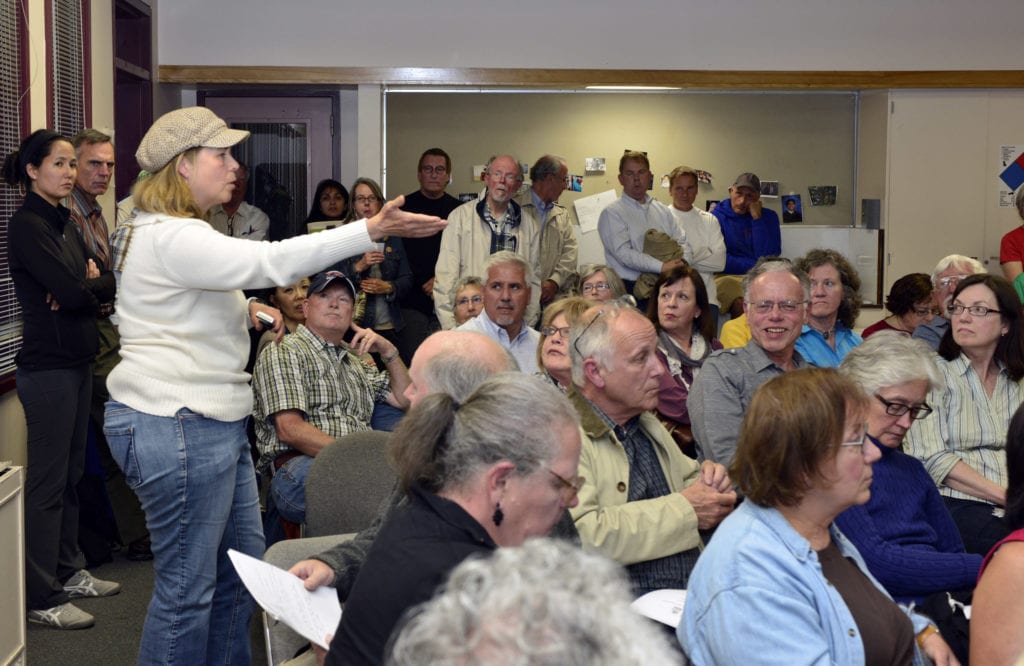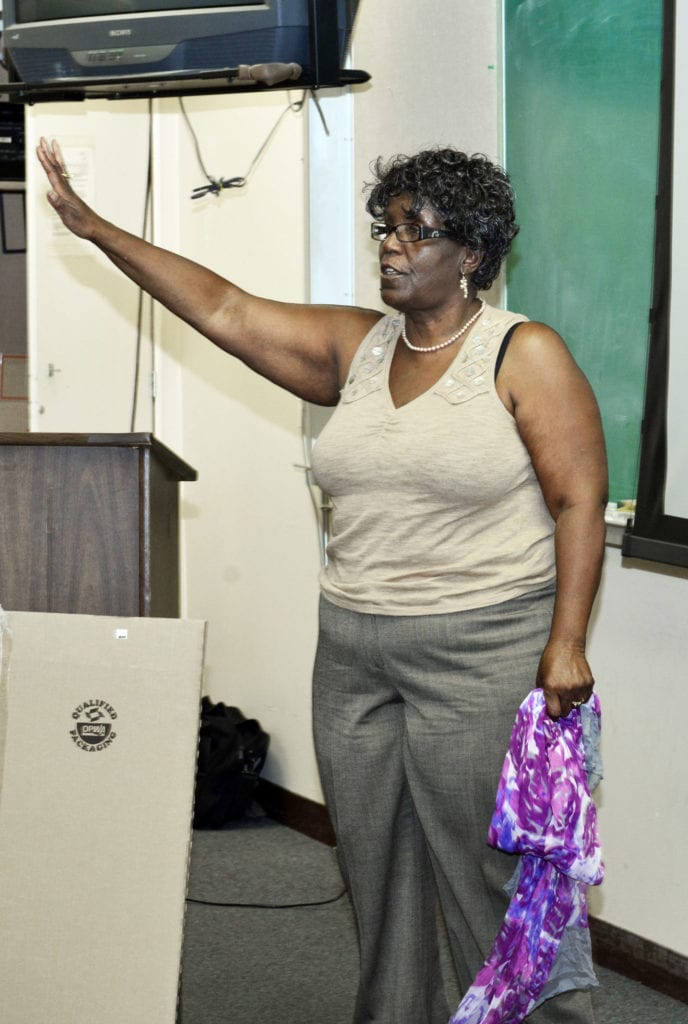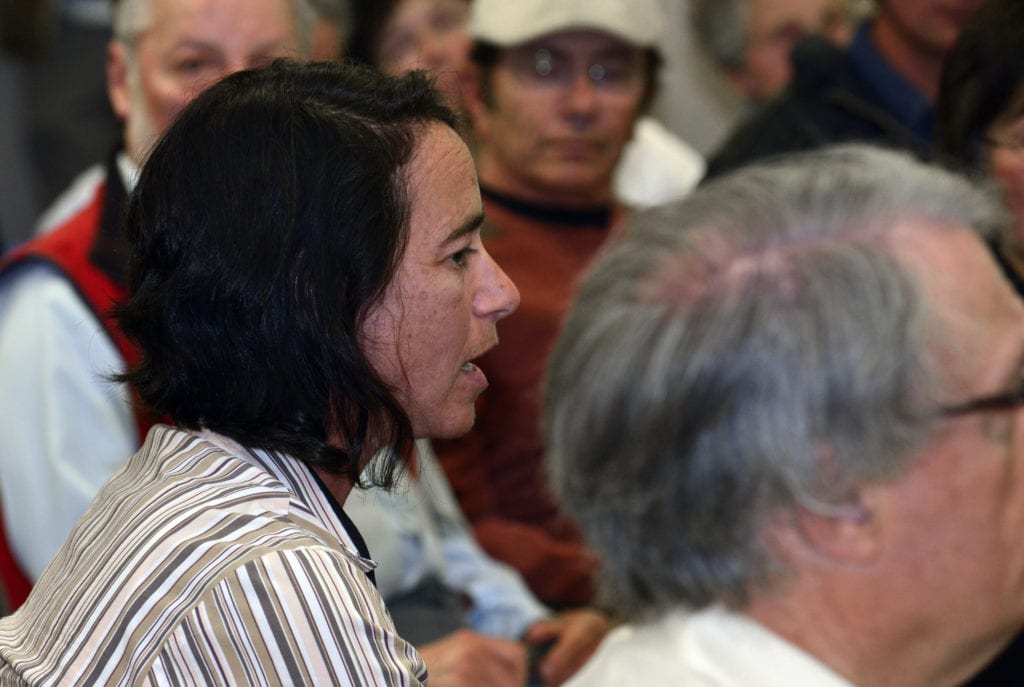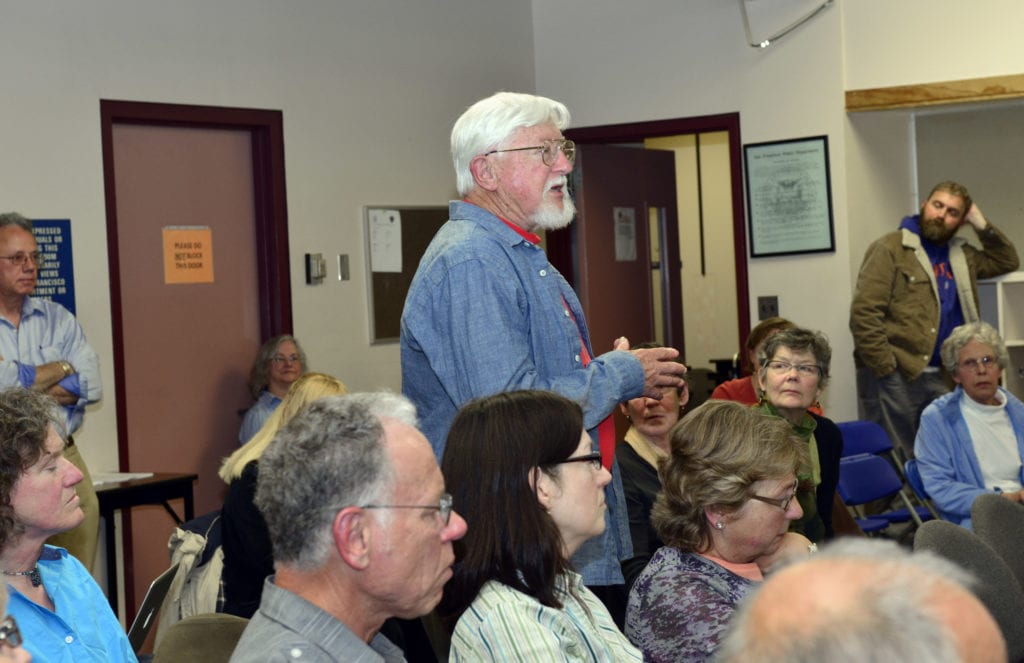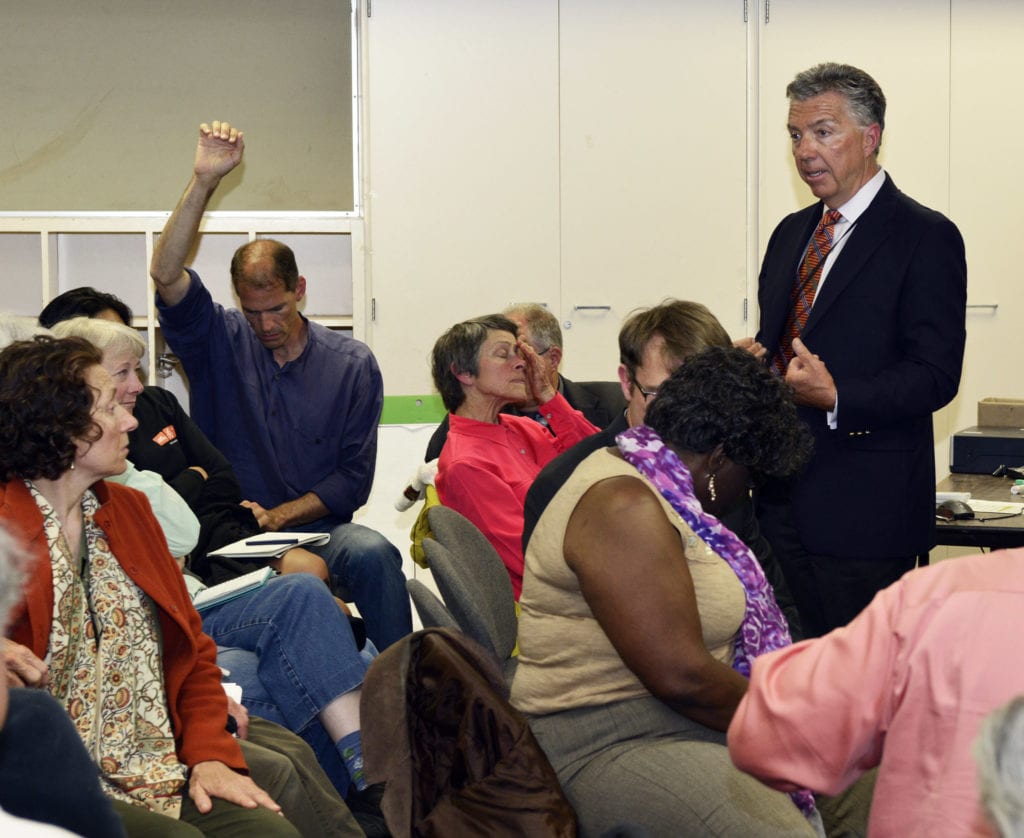Story by Bonnee Waldstein, photos by Michael Waldstein
Glen Park and Diamond Heights residents recently had an opportunity to gain valuable information, get answers, and express varied opinions on many issues affecting Glen Canyon Park: its flora, fauna, and the rights and responsibilities of local Homo sapiens in achieving and maintaining its natural wonders.
On June 28, Betsy Eddy, president of the Diamond Heights Community Association; and Michael Rice, president of the Glen Park Association, assembled an expert panel representing major City government and volunteer organizations – San Francisco Recreation and Park Department, Forest Alliance, San Francisco Department for the environment, and an environmental advocate.
It was an overflow crowd, with around 100 attendees, at the San Francisco Police Academy on Amber Drive.
As if in anticipation of a heated discussion, a professional facilitator was enlisted to keep the meeting moving along a positive and constructive track. Good idea.
Nicholas Dewar, a member of the Glen Park Association board of directors, was tapped for the job and performed his duty with a velvet fist. He solicited ground rules from the group, basic things, like: Don’t say anything until the question period, raise your hand, one person speaks at a time, be respectful, make questions brief, no statements, and speak up or be quiet as appropriate.
Each speaker had a specific time allotment for his/her presentation and they all stuck to the limit. Facts and figures tumbled out in a rapid fire pace. That gave the audience fodder for questions, discussion and argument. At times the ground rules were broken, and there was some sniping, heckling and a few loud and testy exchanges.
DAVID ASSMANN, DEPARTMENT OF THE ENVIRONMENT
We administer an integrated pest management program for the City. It’s aimed at promoting biodiversity in the parks. We maintain a list of approved pesticides and update it every year. We strive to reduce the use as much as possible and substitute less toxic chemicals. The use of pesticides has been misrepresented. The number of applications is misleading. When signs go up in an area of the park announcing an application, it doesn’t mean the whole area will be sprayed. It’s a spot here and a spot there in the given area. More applications may mean that less toxins are being used, so one can’t assume that the higher the number, the more toxins are being applied. “I’m a birder. I took all the photos of the Feathered Friends of Glen Canyon. It’s a unique gem of avian life in the City.”
DENNIS KERN, SAN FRANCISCO RECREATION AND PARKS
There are three issues to highlight. First, the projects that are getting underway as a result of the 2008 Clean and Safe Neighborhood Parks bond. That includes the playground renovation, relocation of the tennis courts, improvements to the Elk Street entrance, addition of an accessible restroom outside the recreation center, and work on the Bosworth Street entrance. Second is the trails program, also part of the bond, in which we’ll be renovating eroding and failing trails and providing improved access. Third is the forestry program. We’ll be attending to aging forestlands in the park to ensure a healthy future. Many stands are of a single age class and are reaching end of life. At the same time, species diversity is low. Diversity is important to prevent disease and promote wildlife habitat. We’ve had a hazardous tree assessment of all trees within fifty feet of trails and structures by an independent outside arborist, Hort Science. We now have specific details on the range of necessary tree work. Any trees that are removed will be replaced one to one.
RUTH GRAVANAS, ENVIRONMENTAL ADVOCATE
The Natural Areas Plan (NAP) is part of the San Francisco General Plan required by state law. It sets out policies and projects in the works and benefits the canyon and the community. NAP is dedicated to preserving naturalistic features that were introduced into the park and have value to local wildlife. The plan assures public access by constructing and restoring trails, following the natural contours and attending to appropriate drainage. Sometimes fencing has to be done, for example, to protect against muddy wallows. Non-native plants such as cape ivy and thistle are removed if they threaten to overtake an area. Letting nature take its course ultimately results in a monoculture. NAP tries to control this by managing these areas to preserve their biodiversity — more flowers, birds, insects, and coyotes. Whenever possible hand tools are used and, now and then, herbicides must be used to control the invasions. We don’t support removal of non-native species if they provide habitat for wildlife and are not harming species that the wildlife depend on. Tree management is done for their health and longevity. They’re removed from wetlands to preserve the watershed. A number of trees can be removed while still retaining canopy coverage.
ERIC MILLER, SAN FRANCISCO FOREST ALLIANCE
We’re a coalition of citywide neighborhood groups who’ve banded together to save urban parks from S.F. Rec and Park, and to debunk myths and misinformation. The Natural Areas Program (NAP) of Rec and Park has expanded beyond its mission. They are treating non-native plants as an invasive threat, conveying a sense of crisis. Virtually all trees in San Francisco are non-native. There are myths about the eucalyptus trees always losing branches and being a fire hazard. You’re more likely to be hit by lightning than a tree limb. We’re against habitat destruction and for preserving existing native and non-native species. NAP has pulled out so many plants, causing erosion and proliferation of poison oak, and habitat destruction during breeding season. The Natural Areas Plan will degrade Glen Canyon Park—its beauty, habitat, trails, climate, shade, air quality and sound barrier. We’re pro public access and for preventing further restrictions on off-trail access. We want budgets that reflect community values that are transparent and accountable.
The question and answer period that followed revealed many fault lines: native vs. non-native species, tree removal, use of pesticides and herbicides, and how to maximize the scarce resources provided by the city budget.
One resident said that recently a very large eucalyptus branch fell within inches of killing him, as he was barbequing in his back yard. Dennis Kern of Rec and Park said there have been many property claims regarding falling tree limbs. Alma Hecht, an arborist, said that living among trees is not without risk.
Someone asked Ruth Gravanas about the relative lack of tree canopy throughout the city. Gravanas answered that the city did not develop in a forested area due to the prevailing climate and that we can’t compare ourselves to other cities with different climates. The trees we have now are the result of human impact and we’re responsible for managing and maintaining them. On the question of the use of herbicides, she responded, “Life is full of tradeoffs. I appreciate the caution people have expressed, but there are cases of losing our biological diversity because certain species have taken over and created a monoculture, and that is not acceptable to me.”
A Diamond Heights resident observed that, over the thirty years she’s lived here, she’s seen a decline and disappearance in bird traffic since “putting out that stuff for mosquitoes.” David Assmann of SF Environment said the city is working towards eliminating the most toxic pesticides and herbicides and using alternatives. The ideal would be none at all, but there aren’t enough people volunteering to pull every weed.
Lisa Wayne of Rec and Park answered a question about which plants have herbicides applied to them. “It has to do with how long they have been allowed to invade. We don’t have the staff resources to completely remove wide areas of invasive species. We’re losing grasslands to microweeds like oxalis, which will destroy the area if you don’t spray. We want to control the proliferation but there’s no funding for it. We don’t have the resources to completely remove, so we can just bring it down to the level where other species can thrive.”
If there is one thing that encapsulates an argument on the most fronts, it would be the eucalyptus tree. People differ as to whether it poses a physical hazard, how valuable it is for wildlife habitat, how many should be clustered together for optimum canopy, and whether it “deserves” a place in the San Francisco ecosystem at all.
People had come to the meeting with some very passionate opinions. It did not seem as though any minds were changed at the end. What was apparent was that we have some people in our city government and our community who are truly dedicated to preserving the legacy of Glen Canyon Park.
